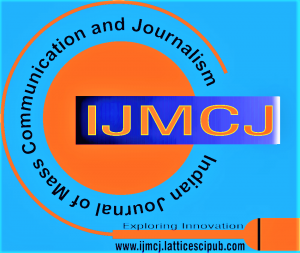Conceptual Blending in Indian Political Cartoon Discourse
Lakshmi Prabha P1, Abhishek Das2
1Lakshmi Prabha P, Junior Research Fellow, Department of Adult Continuing Education and Extension Studies, Jadavpur University, West Bengal, India.
2Dr. Abhishek Das, Assistant Professor, Department of Adult Continuing Education and Extension Studies, Jadavpur, University, West Bengal, India.
Manuscript received on 04 December 2023 | Revised Manuscript received on 14 December 2023 | Manuscript Accepted on 15 December 2023 | Manuscript published on 30 December 2023 | PP: 32-38 | Volume-3 Issue-2, December 2023 | Retrieval Number: 100.1/ijmcj.C106503030324 | DOI:10.54105/ijmcj.C1065.123223
Open Access | Ethics and Policies | Cite | Zenodo | Indexing and Abstracting
© The Authors. Published by Lattice Science Publication (LSP). This is an open-access article under the CC-BY-NC-ND license (http://creativecommons.org/licenses/by-nc-nd/4.0/)
Abstract: Conceptual blending theory has been used by scholars to study various genres of texts. Scholars studying cartoons in particular have used it to study how metaphors and metaphorical blending are used in cartoons to construct meaningful texts. This paper studies selected Indian political cartoons using the Conceptual Blending Theory of Fauconnier and Turner. The themes of the cartoons chosen for the study focused on various social issues that were part of themedia discourse in contemporary times. The study was conducted to understand how cartoons depicting social issues used metaphoric blending to visualise an issue. The paper found that the graphic form of the political cartoon mediates the understanding of a communicative event through the use of cognitive devices like metaphoric blends. It was found that novel metaphoric blends were created in a cartoon text depending on the nature of the issue and that these metaphorical blends are regulated by context and background knowledge regarding the event being represented. It was also observed that the novelty of metaphoric blends in Indian editorial cartoons depended on the social, political and cultural context. Meanwhile, the metaphoric blends also draw into it everyday objects and scenarios that structure the meaning potential of the political cartoon. Another relevant finding is regarding how certain cartoon texts had more than one conceptual blend, forming a network of blends that worked in conjunction with each other. Furthermore, it was observed how conceptual blends in cartoons aided in anchoring the meaning of the cartoon and prevented polysemic confusion. The findings of the research prove that cognitive devices are prevalent in cartoon texts and could significantly direct their interpretation and use.
Keywords: Political Cartoon, Conceptual Blending, Conceptual Metaphor
Scope of the Article: Journalism Genres
